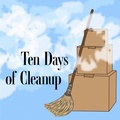>> Chapter three
It’s been a week and I’ve gone to at least ten garage sales, two 99-cents outlets, and five thrift stores to make the headquarters of my new matchmaking service, Baishakunin, Inc., halfway presentable. My best friend Ginne Lee did her part by lending me all this Japanese stuff she had in storage—shoji screens and Japanese bowls—to make everything look authentic.
The only thing missing is a face—the face of my company. I need a Japanese Mrs. Butterworth, a soft, comforting maternal image that I’ll be first to admit I don’t have.
“No. No stealing of web images,” I say, shaking my head. I don’t want a stock photo that someone else may recognize. I want a living, breathing person who can meet my clients. “Have you ever heard of a TV show called Remington Steele?” I ask.
Sophia looks confused. Damn these Generation Y-ers for making me feel so old!
“Well, it starred the actor Pierce Brosnan—”
Still a blank look.
“You know, the last James Bond before this current one?” I then sigh. “Anyway, it was this story of this detective agency owned by this young woman who hires a good-looking man—this Pierce Brosnan—to be the figurehead. But she was the brains behind the operation.”
“Because the clients would have more confidence in a man.”
“Exactly.” At least I see that women’s issues are still somewhat relevant among the younger generation.
“So you’re the brains and you need a James Bond.”
I swallow my last bit of hamachi. “Yeah, I guess, more or less.” I bring the conversation back to more tangible tasks. Sophia has done a terrific job with my website pages so far and we hope to go live the beginning of next week. It doesn’t give me that much time to make good on my deal with my landlord, Jake Martinez. If I find him a match by the end of the month, my rent will be free for an entire year.
I look over Sophia for a second. She’s absolutely gorgeous and obviously smart—aside from her lack of knowledge of the Eighties. But early twenties, much too young for Jake, who, I learned is 37—exactly my age. Some men prefer younger women, but I can tell Jake’s not one of those.
I pay for our meal—Sophia needs to go to an illustration class and I plan to start to drum up some business in Little Tokyo before meeting with a videographer later that day in the office.
***
Back in the pioneer days, where do you figure people went when they wanted to get matched? It wasn’t the local saloon or the dry goods store. It was at church. I figure that the same applies today, so I make my rounds to all the churches and temples in Little Tokyo. The hidden temple behind a gift store, Koyasan. The concrete chapel with stained glass, Union. The church on the corner, Centenary. The temple next to senior citizen housing, Higashi. The temple on the far eastside, Nishi. The narrow Catholic church, Maryknoll.
I leave fliers with either the church administrator or minister. All are congenial, but some seem a little dumbfounded. Baishakunin? That’s pretty old-fashioned. Besides, most of our parishioners are more interested in death than in marriage.
I pride myself in being an optimist, but I have to admit that I’m starting to feel a little shaky. What if my grand scheme fails? I’ll lose my car, my house, and worst of all, my independence. I’ll have to run home, my tail in between my legs, back to my parents’ house. Everyone will be looking at each other, thinking, I told you so.
No, no, no! I scream inside while waiting for the signal to change. I think that I’m having an inner monologue, but apparently, it has gone outside of myself because a Japanese woman sitting on the bus bench glances at me with concern.
“You orai?” she asks.
I nod and give the walk button a few extra thrusts with my thumb.
The woman, still staring at me, gets on her feet. She’s old but not ancient—maybe in her late sixties. Her graying hair is tied back in a bun secured by a hair net—something I haven’t seen since my high school cafeteria days. She’s wearing a house dress that almost reaches her ankles. On her feet are very worn-out loafers. I notice a bundle wrapped in a giant indigo furoshiki on the bus bench next to her. Is this woman homeless? I take a few steps back at she approaches me.
“Oh, no. Shinpai too much, ne? You going to get lines on your face. Too early, too early.” She points to the space in between my eyes and my forehead. For some reason, I expected the woman to smell bad, but her breath is actually quite sweet and her clothing apparently freshly washed.
I miss the traffic light change during her assessment of my aging process, so I have to wait one more round. I study her face. It’s filled with soft wrinkles and her eyes look as if they are drawn by a sumie artist. She has a good set of dentures, so she’s obviously not poor.
“Do you live around here?” I ask her.
The woman nods and points to a low-income housing unit. “Right ova there. Twenty year. After my husband die.” Her black-ink eyes begin to water and I feel bad asking her such personal questions. But she obviously doesn’t mind. “I been doing kaji for fifty year.”
“Kaji?” Didn’t kaji mean fire? So she’s a professional arsonist?
The woman obviously gets that I don’t understand much Japanese. “Ka-ji,” she repeats. “House clean.”
Oh, I nod.
“Oizumi.” She then bows.
“I’m Caroline Mameda.” I put out my hand. Mrs. Oizumi’s hands are rough and callused. I can’t imagine making a living house cleaning as a senior citizen. I can barely handle taking care of my condo. “How much do you charge an hour?”
“What, you need clean?”
I don’t answer her right away. All I know is that I’ve found my Mrs. Butterworth.
* "Baishakunin, Inc." is a work of fiction. The characters, incidents, and dialogue are drawn from the author’s imagination and are not to be construed as real. Any resemblance to actual events or persons, living or dead, is entirely coincidental.
© 2008 Naomi Hirahara / Image: Neal Yamamoto and Vicky K. Murakami-Tsuda





